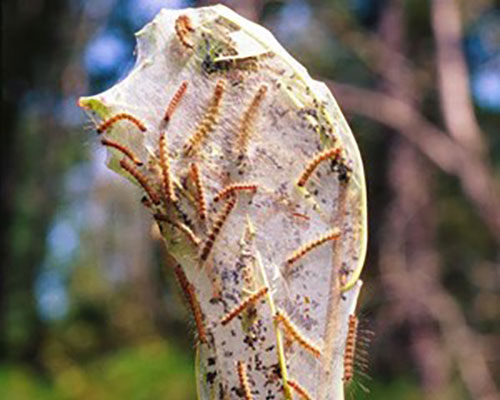
Melinda’s Garden Moments is heard Mon.-Fri. at 7:45 and 10:45 a.m. and 4:45 p.m. on WHAV.
As you drive through your community in late summer or fall you may spot webby nests in the branches of apple, ash, birch, cherry, sycamore, walnut and willow. These are the home of the North American native fall webworm.
This pest attacks more than 100 species of deciduous, those that lose their leaves in winter, trees and shrubs. The pest is a green and yellow caterpillar that spins its nest near the ends of the branch. These worm-like insects eat the leaves on the branches near their webby nest.
Fortunately, this is a cosmetic problem since it occurs late in the season and only a few branches are affected. Keep your plants healthy and they’ll be better able to tolerate the feeding. Several natural predators and parasitoids help keep the populations in check.
You can knock the nest out of the tree with a stick or a strong blast of water if desired.
A bit more information: An organic insecticide, Bacillus thuringiensis (Bt), is effective against young caterpillars. Apply it to the leaves surrounding the webby nest early in the season. As the webworms eat the treated leaves they stop feeding and eventually die.
For more gardening tips, how-to videos, podcasts and more, visit www.melindamyers.com.

